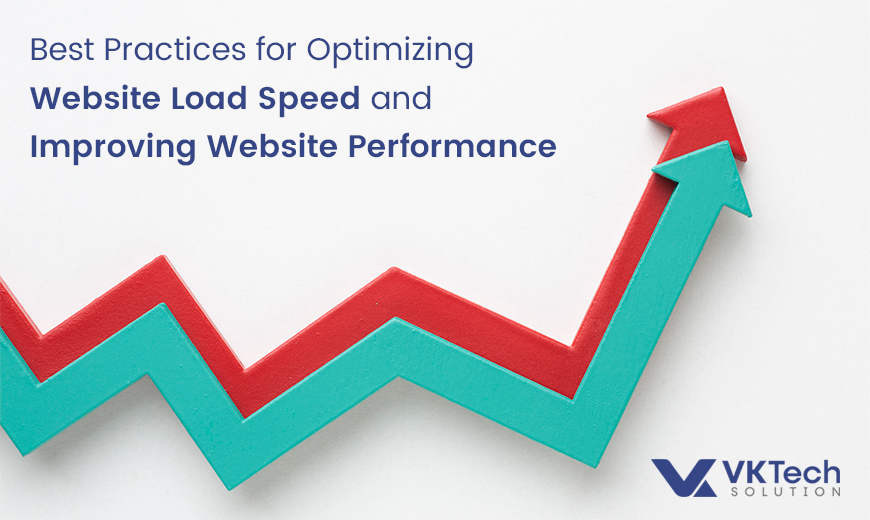Best Practices for Optimizing Website Load Speed and Improving Website Performance
Website load speed and performance are crucial factors in determining the success of a website. A slow website can lead to high bounce rates, lower user engagement, and a negative impact on search engine rankings. On the other hand, a fast and responsive website can improve user experience, increase engagement, and drive more traffic to the site. In this blog, we will explore some of the best practices for optimizing website load speed and improving website performance.
1. Minimize HTTP requests
Every time a user visits a page on your website, their browser sends an HTTP request to the server to retrieve the page and its resources. The more HTTP requests a page requires, the longer it takes to load. To minimize HTTP requests, you can reduce the number of images and other resources, combine and minify CSS and JavaScript files, and use CSS sprites to combine multiple images into a single file.
2. Use a Content Delivery Network (CDN)
A CDN is a network of servers located in different parts of the world that cache and serve your website’s content to users based on their location. Using a CDN can significantly reduce page load times and improve website performance by reducing the distance between users and your server.
3. Optimize images
Images are often the largest files on a page and can significantly impact page load times. To optimize images, use a tool to compress images and reduce their file size while maintaining their quality. Additionally, you can serve images in the appropriate format (JPEG, PNG, or GIF) based on their use and content.
4. Enable browser caching
Browser caching allows frequently accessed resources to be stored in a user’s browser, so they don’t have to be re-downloaded each time the user visits your website. To enable browser caching, you can add appropriate cache control headers to your server’s HTTP response.
5. Minimize the use of plugins
Plugins, such as those for WordPress, can add a lot of unnecessary bloat to your website. Overuse of plugins can slow down your website and negatively impact its performance. Use plugins only when necessary and keep them up-to-date to ensure they are running efficiently.
6. Use a fast and reliable hosting provider
The hosting provider you choose can have a significant impact on your website’s performance. Make sure you choose a fast and reliable host that provides sufficient resources and support to meet the needs of your website.
7. Monitor your website performance
Monitoring your website’s performance is key to ensuring it is running optimally. Use tools such as Google PageSpeed Insights, GTmetrix, and Pingdom to regularly monitor and analyze your website’s performance and make necessary improvements.
8. Minimizing the use of external scripts:
External scripts, such as advertisements, can significantly slow down your website. Consider using external scripts only when necessary and reducing their impact on your website’s performance.
9. Utilizing browser pre-loading:
Browser pre-loading allows your browser to start downloading resources for a page before the user navigates to it, reducing page load times. Consider utilizing browser pre-loading to improve the performance of your website.
Also Read: What are the Top Digital Marketing Trends for 2023?
Endless Benefits: Optimizing Load Speed Performance Today
Optimizing website load speed has numerous benefits, including:
Improved User Experience:
A fast and responsive website provides a better user experience, reducing the frustration and annoyance that slow websites can cause.
Increased Engagement:
Faster website load times can lead to increased engagement, as users are more likely to stick around on a site that loads quickly and provides a smooth experience.
Decreased Bounce Rates:
Slow websites often result in high bounce rates, as users quickly become frustrated and leave the site. Optimizing website load speed can reduce bounce rates and keep users on your site for longer.
Increased Conversion Rates:
Faster website load times can lead to increased conversion rates, as users are more likely to complete a purchase or sign up for a service on a site that loads quickly and provides a smooth experience.
Improved Search Engine Ranking:
Website load speed is a factor in determining search engine ranking, and faster websites are often ranked higher in search results.
Increased Traffic:
Faster websites can drive more traffic to your site, as users are more likely to click through to your site from search results and social media.
Cost Savings:
Optimizing website load speed can also result in cost savings, as slower websites often require more server resources and bandwidth, leading to higher hosting costs.
In conclusion,
optimizing website load speed and improving website performance are critical to the success of your website. By following these best practices, you can ensure that your website runs smoothly and provides a positive user experience for your visitors.
Even our developer helps you to develop a site with eye-catchy and well-optimizing website load speed. So, Contact us today.

